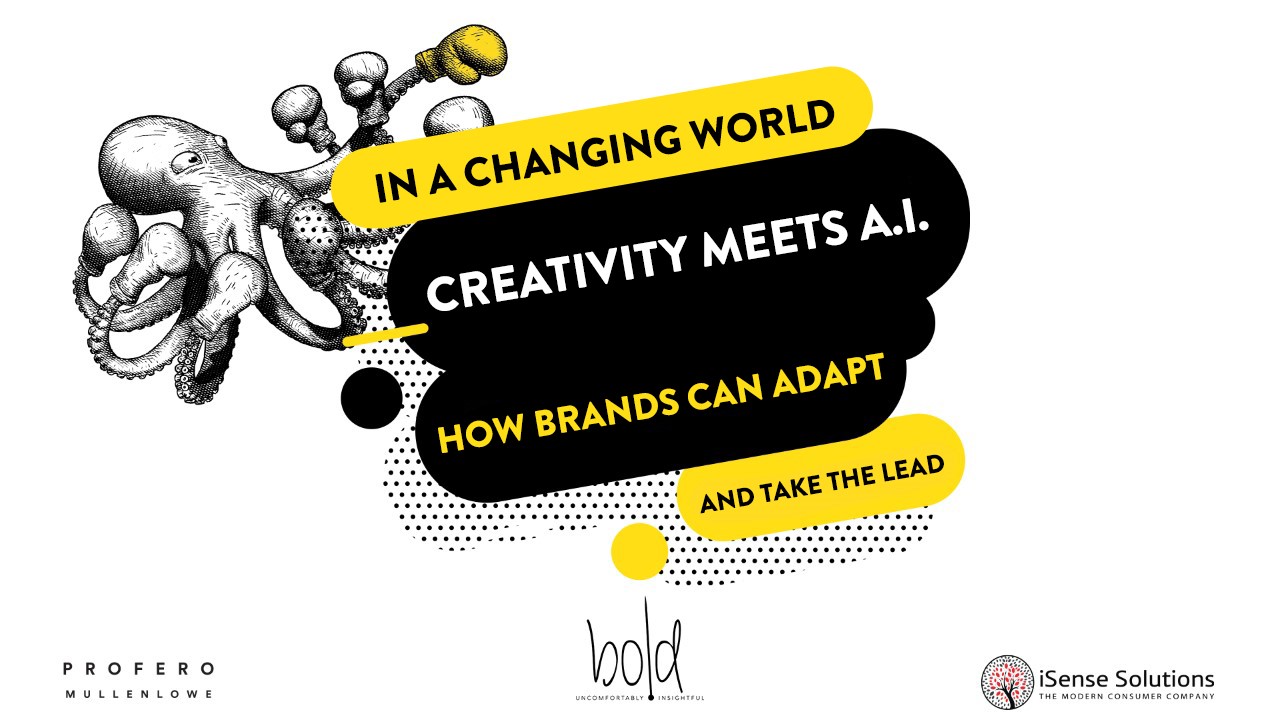BOLD by Profero study: Creativity meets A.I.
How can the Artificial Intelligence (AI) anticipate the consumers’ expectations by acting humanely and adapted to the context? How do they report themselves to AI? And how can the brands used creatively AI solutions in order to develop the business and be closer to the consumers? All of those themes are to be addressed by Profero and iSense Solutions, through Creativity meets A.I.: 6 ways to use Artificial Intelligence in Marketing, the new BOLD by Lowe Group study.
We live times that made the digitalization become a critic priority for the continuation of the business, that determined companies to reconfigure the manner in which they operate, communicate and interact with the public and that made people consume in a different manner the products, the services and the media, with changes that will keep their impact in the future as well. In the face of the new challenges, the top technologies have the capacity of offering efficient answers from a logistic and costs point of view and with extraordinary possibilities at a creativity level. And if, before, the artificial intelligence was, maybe, a nice to have and a sign of the early adopters, in the context of now, AI can be the vector of the relaunch or the brands’ consolidation, through relevance and ultra-personalization,” said Andreea Dinescu, Managing Partner Profero.
Profero’s specialists identified 6 AI’s abilities that brands can capitalize on:
- The artificial intelligence facilitates the understanding of the real world through identifying the gestures, the objects, people or sounds, with the help of video, audio or other type of sensors. Using these data, the brands can create experiences that offer the consumers real time feedback of their actions.
- The deep-learning mechanism allow the technology to generate texts, images, video and audio content that didn’t exist before and that helps the brands create content with a high level of customization, totally digital.
- AI integrates advanced mechanisms that allow the creation of interactivity with consumers, simulating, with a high degree of accuracy, the human behavior, capacity that can be translated in shaping an unique voice brand.
- The artificial intelligence processes huge information volumes by resolving calculus, analyzes, tasks in record time or even instantly, a fact that offers brands the possibility of using in unique manners the data they have.
- the wearable devices such as the smart bracelets are capable of reading the biometric data of the users in real time, a valuable resource based on which the brand can respond ultra-personalized at the consumers’ needs, therefore differentiating themselves on the market.
- based on the data collected, the algorithms identify the trends at the market level or the consumer’s behavior level. Therefore, brands cand defdine new models that grow the innovation capacity.
Moreover, the iSense Solutions study for BOLD by Lowe Group analyzes the relationship of the Romanian consumers with the AI technologies, in the present. The material is based on a sample of 512 Internet users in urban, with the ages 18-50 de ani, and the data have been collected in March 2020.
The data show a discrepancy between the general level of familiarity with the term of artificial intelligence and the degree in which the consumers identify and understand how the AI solutions and, in the end, what they can do for them, if and how they can make their life better. At the same time, an important segment of the public, with a big share among the youngsters, already has this knowledge and is considerably more open at using the AI technologies, including when it comes to the communication with the brands,” said Alina Zelezneac, Research Manager iSense Solutions.
The research shows that 96% of the people in urban have heard about the artificial intelligence, but only 40% say that they interacted with these technologies, even almost all declare that in the last year they used services that integrate AI, such as the Facebook feed (74%), the recommendations in online shopping (73%), smart personal assistants (59%), e-mail spam filters (53%), predictive reach algorithms (38%), virtual assistants (34%) and chatbots (21%).
Three quarters of Romanians say that they can explain in what consists of the artificial intelligence, while the rest are not sure or cannot do that. At the same time, the Romanians believe that the AI solutions can resolve the problems we are confronting ourselves with (67%), replace people’s jobs (66%), operate people surveilling systems (42%), controlling the world (12%) and people’s minds (11%).
Only 35% of Romanians in urban trust, right now, in the AI’s capacity of offering the same customer service as a real person, while 52% consider that, on a long term, the artificial intelligence has the potential of increasing the level of this service.
When it comes to the transmission of personal data in order to benefit of better quality services with the help of the AI, the majority of the people feel comfortable to offer their email address (60%), the name and the surname (57%) and the phone number (54%), while on the opposite front are situated the home address (24%), the revenue of the household (13%), information of personal identification (12%), individual income value (11%) and bank data (5%).
When it comes to the fields where the consumers declare they feel comfortable with the integration of the AI solutions, the first place is occupied by the online retail-ul (65%), followed by telecommunications (59%), customized recommendations in the auto area (58%), financial/ investment system (54%), banking (53%), and on the last place the public administration services (43%).







